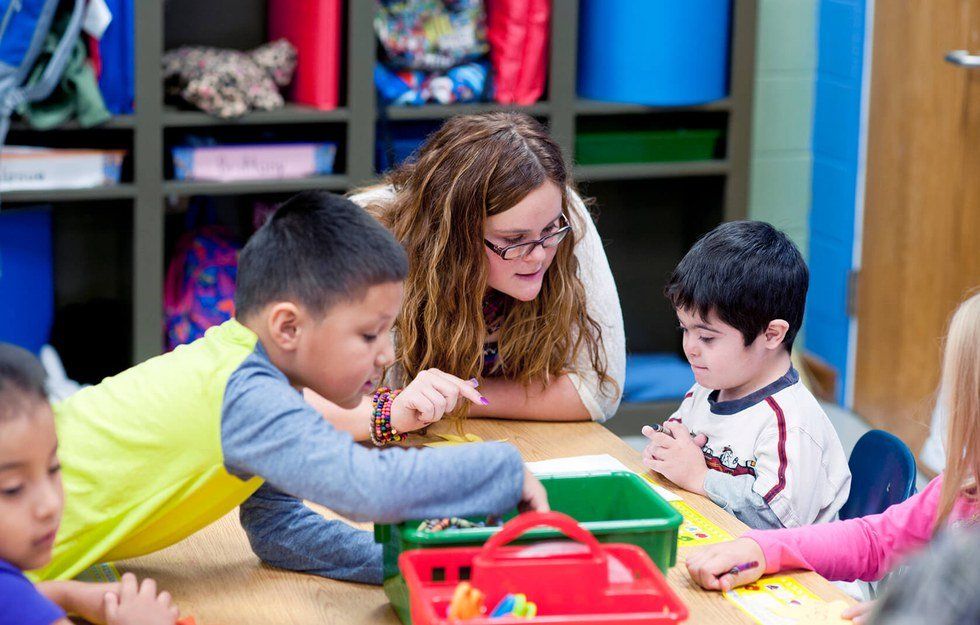Inclusion is the practice of educating children with disabilities in what we call general education classrooms. Throughout my senior year of high school, I befriended 4 students that were in a program called PACE, which stands for Program Approach to Career Employment. For a majority of the day, they stayed in their confined classroom, yet they had interaction with students without disabilities throughout the day. They were never educated in the same classroom.
Inclusion is not a new concept and has been around for longer than most of us have thought. The Scottish Education Act passed in the late 1800s required students with severe visual impairments — blind and low-vision students — to be educated alongside their peers without disabilities. Laws on inclusion have been expanding since then with the Individuals with Disabilities Education Act, requiring all students to have the right to a free appropriate education. The No Child Left Behind Act, passed in 2001, is essentially being tweaked to add sections for all children, including those with disabilities, are receiving an inclusive and responsive education.
Many people think that inclusion is non-beneficial to students with and without disabilities, but that is not entirely true. According to the Maryland Coalition for Inclusive Education, studies investigating the effects of placement in general education classrooms reveal positive outcomes in the areas of IEP (Individualized Education Plan) quality, time of engagement, and individualized supports. By being in the general education classroom, students are more active with their peers and with the actual learning. In self-contained classrooms, they are less engaged and more alone. I know a young man that attended a school that included 50 percent in a specialized classroom and the other 50 percent with his peers, and then transitioned to a school that required only being in a specialized classroom. He much rather preferred having time to learn with his non-disabled peers. It not only gave him an amazing education but also educated him in social situations.
Many students gain higher overall percentages in subject areas when learning with their non-disabled peers. The curriculum in inclusive classrooms is better overall and benefits all students. There is often concern on the education of non-disabled children being taught in an inclusive classroom. Most people think that it will affect their learning and cause a distraction. According to Hollowood and colleagues, also from the Maryland Coalition for Inclusive Education, they researched classrooms with children with disabilities and without and there were no differences in the learning of non-disabled children. There is also the factor of peer tutoring, which can come into play in an inclusive classroom. This is beneficial to both disabled and non-disabled students as it helps them to increase their academics and gain social interactions. I remember in my high school, students with learning disabilities were placed in a few of my classes and they were not a distraction to me. They learned everything we did and seemed to do pretty well in the course.
Not only does inclusion improve a student's academics, but also improves other forces in the student’s life. These forces include fewer absences from school, less disruptive behavior and better outcomes after graduating high school.
Students are not the only ones learning in the classroom — the teachers are as well. Teachers and instructors need effective learning strategies to be able to educate both children with and without disabilities. Making sure teachers have a good foundation and preparation for educating these students is essential to students success and even the teachers. A strategy that is effective is the use of visuals. Using graphic organizers, maps, and textbooks enhances the students learning and performance.
In the College of St. Scholastica in Duluth, Minnesota, Scaffolding (or providing temporary support while students build skills to complete a task independently) was the most common strategy used. Teachers in inclusive classrooms need to understand that they will need to make many changes and modifications to their lesson plans, such scaffolding. I have talked to numerous teachers that have multiple students with IEPs in one class, and they believe that co-teaching is another effective strategy for teachers to utilize. Co-teaching is having a general education teacher and a special education teacher work together to deliver instruction to both types of students. Collaborative teaching is effective because both teachers can focus on their group of students.
Inclusion has overall positive outcomes on a student's learning and education. It has a positive effect on both disabled and non-disabled children. There is more experience for social interaction and an overall better learning experience. Students show better outcomes after high school by going to a school that practices inclusion. As a previous special education major and current secondary education major, I believe that this would be a good way to integrate these students into the mainstream classes. If you know anyone with disabilities or know someone who has a child with a disability, go to their school and ask the principal what is being done to include these students in the classroom. Voicing your opinion can change everything.





















